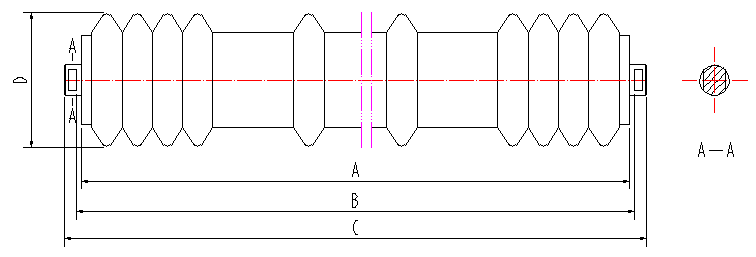 Afrikaans
Afrikaans  Albanian
Albanian  Amharic
Amharic  Arabic
Arabic  Armenian
Armenian  Azerbaijani
Azerbaijani  Basque
Basque  Belarusian
Belarusian  Bengali
Bengali  Bosnian
Bosnian  Bulgarian
Bulgarian  Catalan
Catalan  Cebuano
Cebuano  Corsican
Corsican  Croatian
Croatian  Czech
Czech  Danish
Danish  Dutch
Dutch  English
English  Esperanto
Esperanto  Estonian
Estonian  Finnish
Finnish  French
French  Frisian
Frisian  Galician
Galician  Georgian
Georgian  German
German  Greek
Greek  Gujarati
Gujarati  Haitian Creole
Haitian Creole  hausa
hausa  hawaiian
hawaiian  Hebrew
Hebrew  Hindi
Hindi  Miao
Miao  Hungarian
Hungarian  Icelandic
Icelandic  igbo
igbo  Indonesian
Indonesian  irish
irish  Italian
Italian  Japanese
Japanese  Javanese
Javanese  Kannada
Kannada  kazakh
kazakh  Khmer
Khmer  Rwandese
Rwandese  Korean
Korean  Kurdish
Kurdish  Kyrgyz
Kyrgyz  Lao
Lao  Latin
Latin  Latvian
Latvian  Lithuanian
Lithuanian  Luxembourgish
Luxembourgish  Macedonian
Macedonian  Malgashi
Malgashi  Malay
Malay  Malayalam
Malayalam  Maltese
Maltese  Maori
Maori  Marathi
Marathi  Mongolian
Mongolian  Myanmar
Myanmar  Nepali
Nepali  Norwegian
Norwegian  Norwegian
Norwegian  Occitan
Occitan  Pashto
Pashto  Persian
Persian  Polish
Polish  Portuguese
Portuguese  Punjabi
Punjabi  Romanian
Romanian  Russian
Russian  Samoan
Samoan  Scottish Gaelic
Scottish Gaelic  Serbian
Serbian  Sesotho
Sesotho  Shona
Shona  Sindhi
Sindhi  Sinhala
Sinhala  Slovak
Slovak  Slovenian
Slovenian  Somali
Somali  Spanish
Spanish  Sundanese
Sundanese  Swahili
Swahili  Swedish
Swedish  Tagalog
Tagalog  Tajik
Tajik  Tamil
Tamil  Tatar
Tatar  Telugu
Telugu  Thai
Thai  Turkish
Turkish  Turkmen
Turkmen  Ukrainian
Ukrainian  Urdu
Urdu  Uighur
Uighur  Uzbek
Uzbek  Vietnamese
Vietnamese  Welsh
Welsh  Bantu
Bantu  Yiddish
Yiddish  Yoruba
Yoruba  Zulu
Zulu Designing Efficient Conveyor Belt Idler Systems for Optimal Performance and Durability
Conveyor Belt Idler Design An Overview
Conveyor systems are an integral component of material handling in various industries, ranging from mining to manufacturing and logistics. At the heart of these systems lies the conveyor belt idler, a critical component that influences both the efficiency and durability of the conveyor system. This article explores the design considerations, types, and innovative approaches to conveyor belt idler design.
Understanding Conveyor Belt Idlers
Idlers are the rollers that support the weight of the conveyor belt and the material being transported. Their primary function is to provide support, reduce friction, and maintain the alignment of the conveyor belt, thus facilitating smooth operation. The design of idlers directly impacts the operational efficiency, energy consumption, and maintenance requirements of the conveyor system.
Types of Idlers
There are several types of conveyor belt idlers, each with specific designs tailored for different applications
1. Carrying Idlers Located underneath the conveyor belt, carrying idlers support the weight of the transported material. They typically come in various configurations, such as flat or trough-shaped, to optimize material containment and reduce spillage.
3. Impact Idlers Placed at loading zones, impact idlers are built to absorb the shock from heavy loads. Their robust design minimizes the risk of damage to the belt during loading and enhances the lifespan of the conveyor system.
4. Training Idlers These idlers are used to correct the belt's trajectory, ensuring it remains aligned throughout its journey. Proper training is critical to prevent belt misalignment, which can lead to increased wear and downtime.
conveyor belt idler design

Design Considerations
When designing conveyor belt idlers, several factors must be considered to ensure optimal performance
1. Material Selection The choice of materials for idler construction directly affects their durability and resistance to wear. Common materials include steel, aluminum, and plastic, with each offering unique benefits depending on the application.
2. Load Capacity Idlers must be designed to handle the specific loads they will encounter. This includes considering both static and dynamic loads, which can vary significantly during operation.
3. Environmental Conditions The operating environment plays a crucial role in idler design. For instance, idlers used in heavy-duty applications, such as mining, must withstand harsh conditions such as high levels of dust, moisture, and extreme temperatures.
4. Maintenance Designing idlers for ease of maintenance is vital for minimizing downtime. Features such as easy access for lubrication and modular designs can significantly enhance serviceability.
Innovative Trends in Idler Design
Recent advancements in conveyor belt idler design focus on improving efficiency, reducing energy consumption, and enhancing sustainability. Innovations such as self-cleaning idlers and noise-reducing designs are becoming increasingly popular. Furthermore, the integration of sensors and monitoring technology allows for real-time tracking of idler performance, enabling predictive maintenance and minimizing unexpected failures.
Conclusion
The design of conveyor belt idlers is a crucial aspect of ensuring the efficient and reliable operation of conveyor systems. By considering the various types, design factors, and the latest innovations, industries can optimize their material handling processes, ultimately leading to increased productivity and reduced operational costs. As technology continues to advance, the future of conveyor belt idler design holds the promise of even greater efficiency and sustainability.
-
Revolutionizing Conveyor Reliability with Advanced Rubber Lagging PulleysNewsJul.22,2025
-
Powering Precision and Durability with Expert Manufacturers of Conveyor ComponentsNewsJul.22,2025
-
Optimizing Conveyor Systems with Advanced Conveyor AccessoriesNewsJul.22,2025
-
Maximize Conveyor Efficiency with Quality Conveyor Idler PulleysNewsJul.22,2025
-
Future-Proof Your Conveyor System with High-Performance Polyurethane RollerNewsJul.22,2025
-
Driving Efficiency Forward with Quality Idlers and RollersNewsJul.22,2025





























